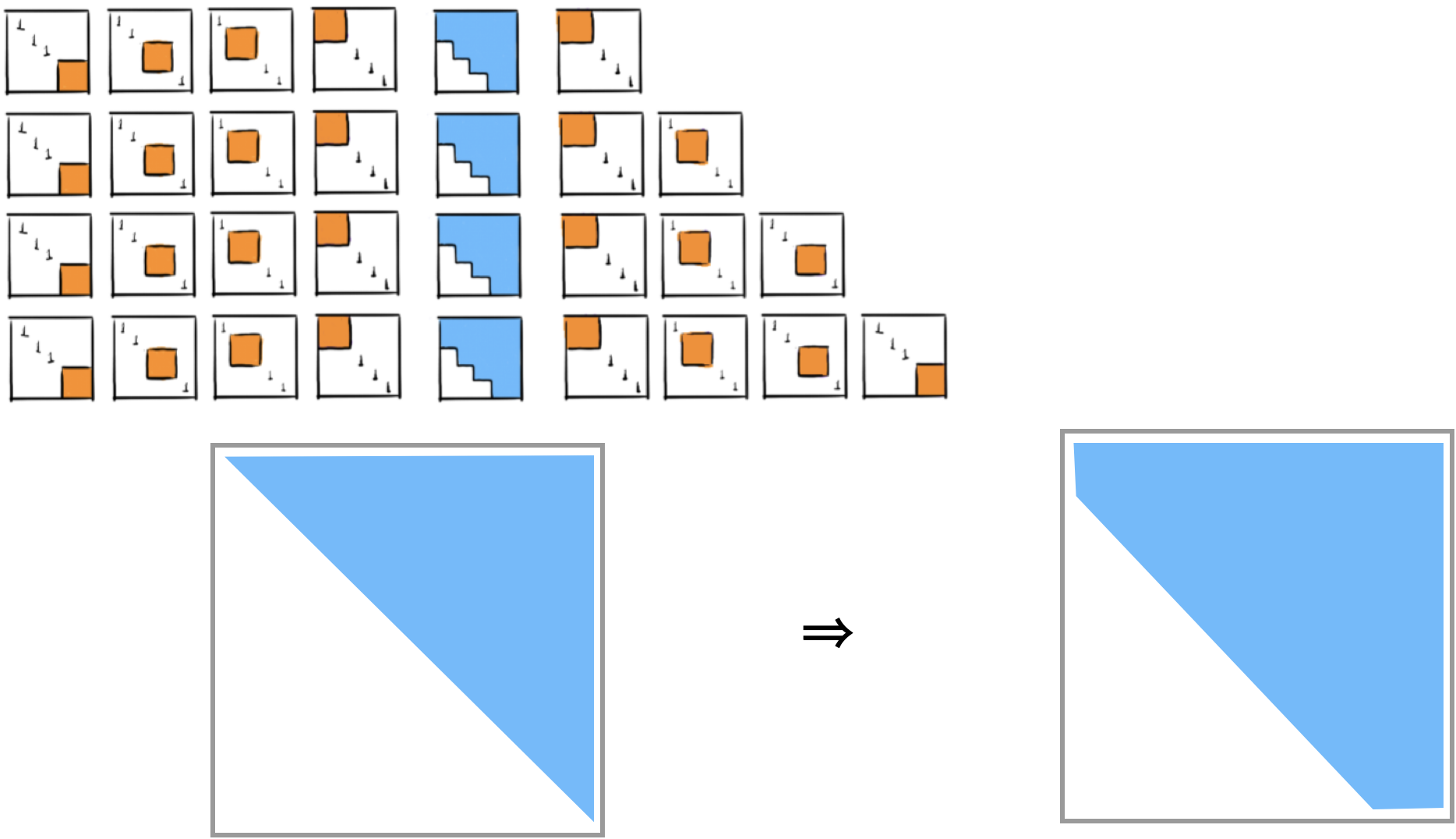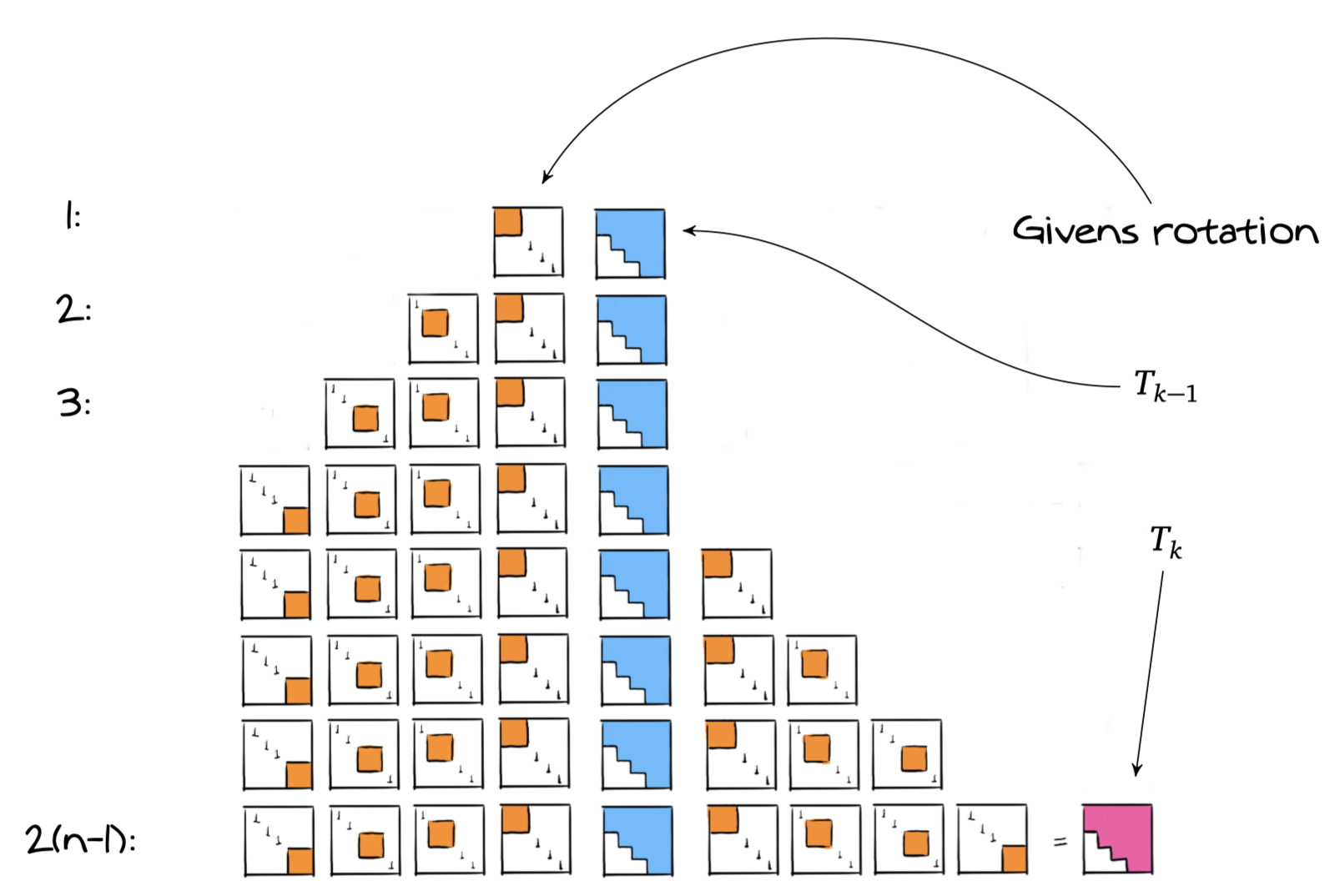Let’s first perform a QR factorization step using Givens transformations.

Let’s do this step-by-step.
Step 1: We first perform a series of small Givens transformations applied to the left.

Step 2: Then these Givens transformations are applied to the right.

We obtain again a matrix in upper Hessenberg form.
- Cost of QR:
- Cost of RQ:
- Total cost of one QR iteration:
This is much less than the for the original QR iteration.
QR iteration with upper Hessenberg matrix
- The QR iteration algorithm conserves the upper Hessenberg form.
- The time cost per iteration in upper Hessenberg form is .
- The total time cost is .
Geometric interpretation
- Each QR step can be seen as a refined rotation of our coordinate system.
- We are gradually aligning our axes with the eigenvectors, but doing so through a series of small, precise adjustments.
- The Hessenberg form allows these adjustments to be made much more efficiently.
Algorithm:
function givens_QR_iteration_s!(H)
n = size(H,1)
G = zeros(2,n-1)
for k=1:n-1
c, s = givens(H[k,k], H[k+1,k])
G[:,k] = [c; s]
# Multiply by Givens rotation to the left
apply_left_givens!(H, k, c, s)
end
for k=1:n-1
# Multiply by Givens rotation to the right
apply_right_givens!(H, k, G[1,k], G[2,k])
end
endSummary of one step of the QR iteration with the upper Hessenberg form
